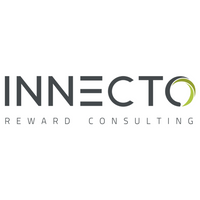What are the essential elements of a responsible reward strategy for both executives and employees?

Events over the past 12 months, including the impact of the pandemic and the tragic events leading to the impetus of the Black Lives Matter movement, means that the Social in Environmental, Social and Governance (ESG) has come to the fore. As we lead into 2021, you should consider a renewed focus on your reward strategy – looking with a fresh lens at how you make sure your reward is better aligned to the needs of your employees, your business and the wider society you operate in.
1. Transparency
This brings me to one of my first essential elements for a responsible reward strategy: transparency. Most reward strategies will say ‘we want to be open and clear so employees understand what they are paid and why’, yet if you ask employees, most will say they have no idea how pay works in their organisation. The same goes for Executives – there is a reason why the UK corporate governance code suggests ‘simplicity and clarity’ as core factors when designing remuneration. If you don’t understand how reward works, you are less likely to trust pay decisions and more likely to have a biased perception around pay fairness.
A 2015 PayScale study of 71,000 employees showed that, 80% of the people surveyed who were paid above market rate thought they were paid at market or below, demonstrating a missed opportunity and potential waste of money. You don’t have to go to Buffer’s level of openness, sharing how everybody is paid. However, as Buffer demonstrated when they implemented their transparent pay process, by educating employees on the process and elements that determine their compensation, managers reported having more meaningful and effective compensation conversations. As a result, employee trust, engagement and retention remain above average at the social media management firm.
Evolving reward transparency can start with small things, such as educating employees on the rationale behind your approach to help manage expectations and create a sense of openness, or enabling access to market data. Using technology to engage managers and share benchmark information to inform reward decisions can empower them with perspective to see how their recommendations compare, and provides a foundation for conversations with their employees.
2. Aligning to purpose, values and community
My next essential element of a responsible reward strategy considers alignment to purpose, values and community. The role of company purpose has never been more relevant considering events of the past year, and ensuring that it is translated into your reward-related practice is key. This is where authenticity comes into play. Although we’ve seen many organisations voluntarily payback furlough money when they have benefitted from the pandemic, others have made very public U-turns and bowed to pressure to reduce profit share pay-outs, so they are not seen to be using government assistance to supplement the packages of senior leaders.
Increased scrutiny has forced many organisations to strongly reconsider actions and practices around reward, learning from others who remain true to their purpose. The way you recognise and reward your employees therefore needs to fit with the kind of organisation you aspire to be – this might mean you need to step back and evaluate what messages your current offer sends, and if it aligns with your aspirations. This is especially relevant when considering elements such as recognition and benefits, looking at how the total reward package is brought together so it feels aligned to your brand. You should ensure it is targeted and resonates with your employees, so it feels more like a fully connected, complete proposition reflective of your organisational values and ethos.
3. Diversity, equity and inclusion
My third essential element builds on the magnification we’ve seen over the past year in diversity and inclusion, following the rise of the Black Lives Matter movement and the disproportionate impact of Covid-19 on key workers and those from BAME backgrounds.
There is mounting evidence that more diverse organisations are more profitable and successful, and we are now seeing investor bodies telling listed organisations they will vote against them if they do not see evidence of more diverse boardrooms. But if you want to create a responsible reward strategy, you shouldn’t be waiting to be pushed – you need to go beyond words and demonstrate what you are doing to improve diversity, equity and inclusion (DEI).
Although we’ve seen more and more organisations taking proactive steps – for example, deciding to publish their ethnicity pay gaps ahead of any regulatory requirement – far more needs to be done to ensure that reward practices are fairer, more inclusive and better suited to the whole workforce.
We’ve seen several organisations start this journey by undertaking equal pay audits. One of the biggest challenges they are finding is that they simply do not have enough data to understand how people identify themselves. For example, very few organisations capture information on disability or sexual orientation, so how can you demonstrate that you are a more diverse and inclusive organisation when you don’t know how diverse (or not) you are to start with? This is not about meeting targets or tokenism – you need to really be clear on why DEI is important for your business, and by assessing the current state of your organisation, you can set out appropriate plans and goals.
All good reward strategies should clearly define the principles and basis for the total reward deal on offer – a good responsible reward strategy takes it up a notch. Instead of stating ‘we pay fairly’ or ‘we pay in line with the market’, be more explicit and explain what this actually means, evidencing it and monitoring progress. Now is a fantastic opportunity to move beyond bland, generic statements to create a reward strategy that truly fits with your direction of travel, one that feels authentic and puts the Social in ESG at its heart.
The author is Justine Woolf director of consulting at Innecto Reward Consulting.
This article is provided by Innecto Reward Consulting.
Supplied by REBA Associate Member, Innecto Reward Consulting
We have more than 20 years' experience in getting employers' pay and reward working harder for them.







